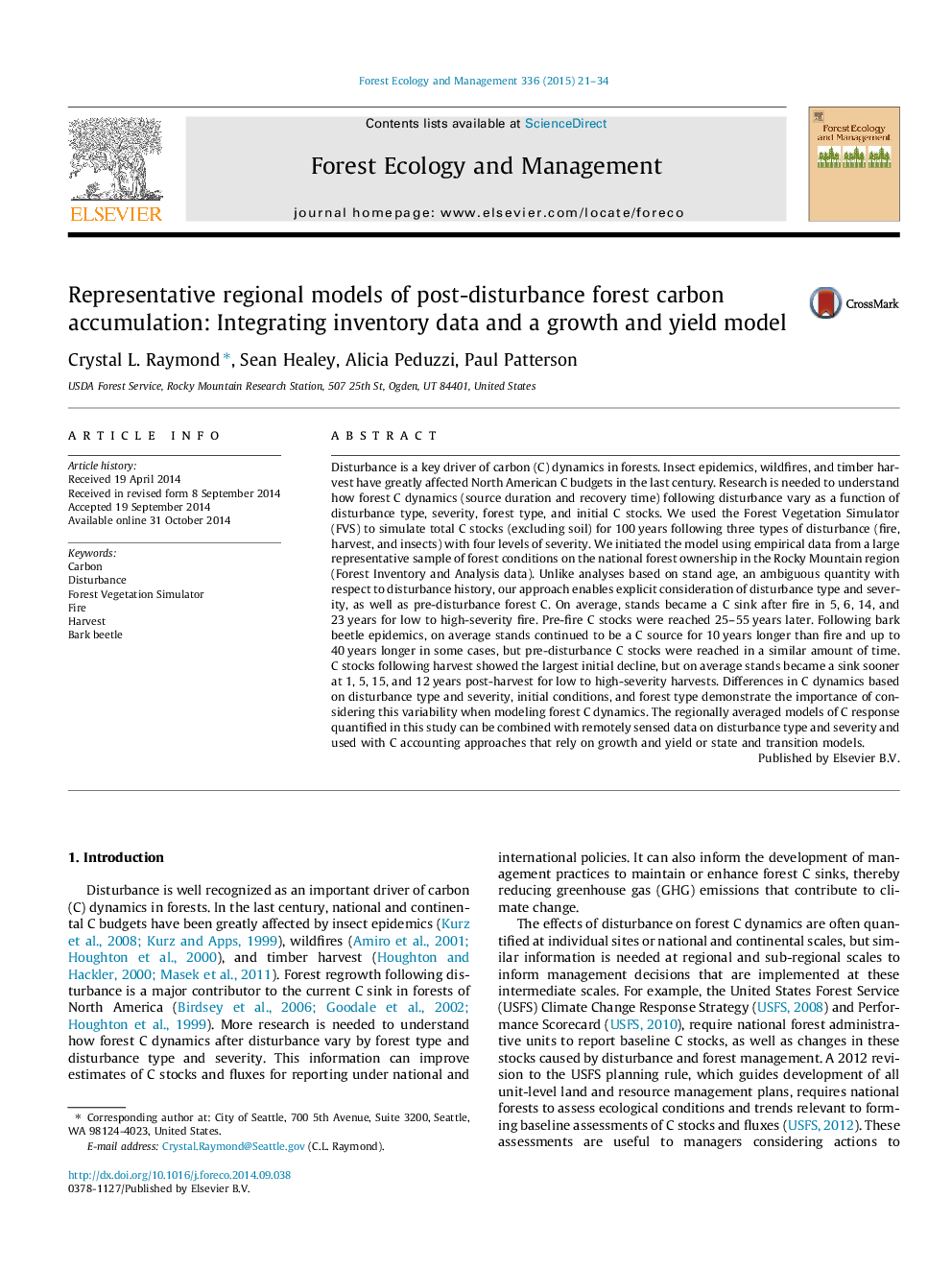| کد مقاله | کد نشریه | سال انتشار | مقاله انگلیسی | نسخه تمام متن |
|---|---|---|---|---|
| 86413 | 159187 | 2015 | 14 صفحه PDF | دانلود رایگان |
• We demonstrate a new method for quantifying post-disturbance carbon trends.
• The method combines national forest inventory data and a growth and yield model.
• Post-fire C recovery time increases with increasing severity and initial level of C.
• After bark beetle epidemics, forests remained a C source for longer than post-fire.
• After harvests, forests had the largest initial C decline but became a sink sooner.
Disturbance is a key driver of carbon (C) dynamics in forests. Insect epidemics, wildfires, and timber harvest have greatly affected North American C budgets in the last century. Research is needed to understand how forest C dynamics (source duration and recovery time) following disturbance vary as a function of disturbance type, severity, forest type, and initial C stocks. We used the Forest Vegetation Simulator (FVS) to simulate total C stocks (excluding soil) for 100 years following three types of disturbance (fire, harvest, and insects) with four levels of severity. We initiated the model using empirical data from a large representative sample of forest conditions on the national forest ownership in the Rocky Mountain region (Forest Inventory and Analysis data). Unlike analyses based on stand age, an ambiguous quantity with respect to disturbance history, our approach enables explicit consideration of disturbance type and severity, as well as pre-disturbance forest C. On average, stands became a C sink after fire in 5, 6, 14, and 23 years for low to high-severity fire. Pre-fire C stocks were reached 25–55 years later. Following bark beetle epidemics, on average stands continued to be a C source for 10 years longer than fire and up to 40 years longer in some cases, but pre-disturbance C stocks were reached in a similar amount of time. C stocks following harvest showed the largest initial decline, but on average stands became a sink sooner at 1, 5, 15, and 12 years post-harvest for low to high-severity harvests. Differences in C dynamics based on disturbance type and severity, initial conditions, and forest type demonstrate the importance of considering this variability when modeling forest C dynamics. The regionally averaged models of C response quantified in this study can be combined with remotely sensed data on disturbance type and severity and used with C accounting approaches that rely on growth and yield or state and transition models.
Journal: Forest Ecology and Management - Volume 336, 15 January 2015, Pages 21–34
